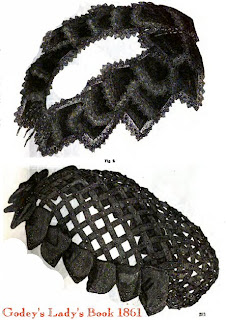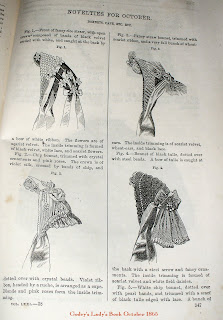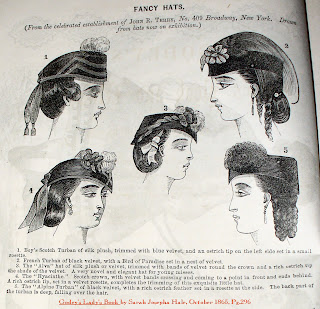Dinners in the 1860s were normally held at 7 or 8 o'clock at night . During the social season (after Easter to August 12 in England, or from Fall to early Spring depending on the weather in the U.S.) it was customary to give out invitations three weeks in advance. For smaller gatherings or dinners during the "slow season" one or two weeks advance notice was considered sufficient. Invitations were written by hand or could be printed up with blanks to fill in with the guests names and the date of the dinner.
Invitations and R.S.V.Ps were a must as dinners could be large affairs with 10 courses as is given in the book The Habits of Good Society from 1865:
This book recommends fill in the blank invitations if you entertain a lot printed as below:
Another book, Practical Cooking and Dinner Giving by Mary Foote Henderson in 1876 suggests similarly worded but handwritten invitations:
Invitations were normally printed or written on cards, roughly 4.5"x 6" with a matching envelope. Invitations were delivered by servants by hand. Invitations were only mailed if a guest lived far away. An example of an invitation from 1890 can be seen here.
I plan to hand out invitations the Friday of the event and hopefully host the soiree on Saturday or Sunday--not up to period etiquette but it will have to do. I plan to do group invitations addressed to "The Ladies of the 44th Mississippi" and the like. For anyone who thinks they would like to be invited, we are pretty sure it will be at a big event in October, which should narrow down the particular event for most of us. If it goes well we will probably be hosting more at more events and encouraging others to do the same. Why should the men have all of the fun?


































